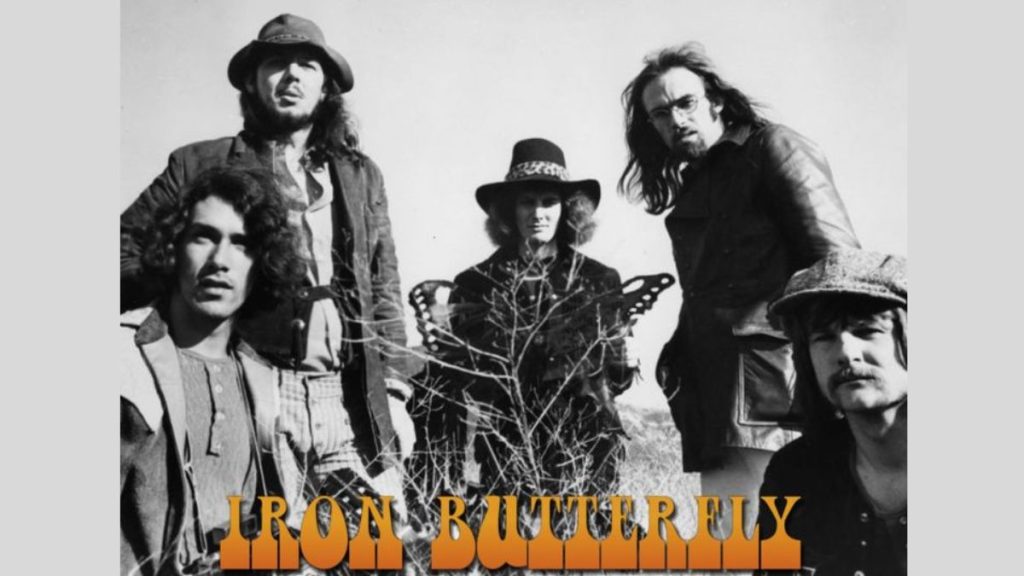Few albums in rock history have created as much of a lasting impression as Iron Butterfly’s “In A Gadda Da Vida.” This breakthrough record from 1968 has aged remarkably well, resonating with music fans of all ages. We will examine the album’s background, its influence on the music industry, and the reasons for its continued popularity after more than half a century.
The Birth of an Iconic Album
The Band’s Genesis
In 1966, Doug Ingle (vocals/keyboards), Ron Bushy (drums), Lee Dorman (bass), and Erik Brann (guitar) founded Iron Butterfly in San Diego, California. The band stood out in the late ’60s counterculture music scene with their innovative fusion of psychedelic and hard rock with progressive elements.
The Album’s Title
Mysteriously titled “In A Gadda Da Vida,” the song‘s name has been said to be a drunken mispronunciation of “In the Garden of Eden.” Rumor has it that lead singer Doug Ingle was too drunk to properly explain the song’s title to his comrades, thus they ended up with this obtuse expression. The album’s title, from wherever it arose, has come to symbolize its aura of mystery.
The Magnum Opus: Side B’s Epic Title Track
A 17-Minute Odyssey
The 17-minute title track is the album’s highlight and a psychedelic rock opera that defies traditional song structures. It is a journey into the depths of musical exploration, complete with lengthy instrumental solos and fascinating vocal parts.
Impact on the Psychedelic Movement
“In-A Gadda Da Vida” perfectly encapsulated the spirit of the psychedelic counterculture of the late 1960s. An anthem for the counterculture, its dreamy, otherworldly soundscapes reflected the time’s obsession with altered states of consciousness.
The Album’s Enduring Legacy
Chart-Topping Success
“In-A-Gadda-Da-Vida” shot to the top of the charts after its initial release, eventually reaching position #4 on the Billboard 200. This album’s commercial success reflected its global popularity.
Influencing Future Generations
The album anticipated the emerging heavy metal genre with its blend of rock, psychedelic, and progressive elements. Iron Butterfly has been mentioned as an inspiration by bands such as Black Sabbath and Led Zeppelin.
Continued Popularity
The appeal of “In-A-Gadda-Da-Vida” has not diminished with the passage of time. Its innovative tone and capacity to take listeners to another world are two reasons for its enduring popularity.
Conclusion
The album “In A Gadda Da Vida” by Iron Butterfly is more than simply music; it has become an iconic piece of pop culture. Its groundbreaking sound and influence on subsequent rock giants made an indelible mark on the music business. For us music lovers, this unique musical trip will be a must-hear for many years to come.
Listen to “In A-Gadda Da Vida” and be enchanted, whether you’re a longtime follower or just discovering the band.
FAQ’s
What inspired the creation of the title track, “In-A-Gadda-Da-Vida”?
The title track of the album, “In-A-Gadda-Da-Vida,” is commonly said to have originated from a slurred and inebriated rendition of the phrase “In the Garden of Eden.” The mysterious nature of the album is enhanced by the legend that frontman Doug Ingle came up with the title while under the influence of alcohol.
How did “In-A-Gadda-Da-Vida” influence the heavy metal genre?
Since it combines rock, psychedelic, and progressive sounds, “In-A-Gadda-Da-Vida” is generally seen as a forerunner of heavy metal. Bands like Black Sabbath and Led Zeppelin owed a great deal to the album’s pioneering sound, which it helped to establish.
What makes the title track of “In-A-Gadda-Da-Vida’s” so unique?
The album’s title tune is a 17-minute psychedelic rock opera with hypnotic vocal parts and extended instrumental solos. Its length and daring ingenuity set it alone as a landmark in musical history.
Did “In-A-Gadda-Da-Vida’s” receive critical acclaim upon its release?
The album was a commercial and critical triumph when it was released in 1968. It reached the top five on the Billboard 200, proving its widespread popularity and cementing its position in music history.
Why is “In-A-Gadda-Da-Vida” still relevant today?
The answer is that the album’s ageless tone and its capacity to take listeners to a another musical dimension have ensured its continued relevance. Its effect on later generations of performers and its reputation as a cultural touchstone will assure the album’s enduring appeal to music fans.







